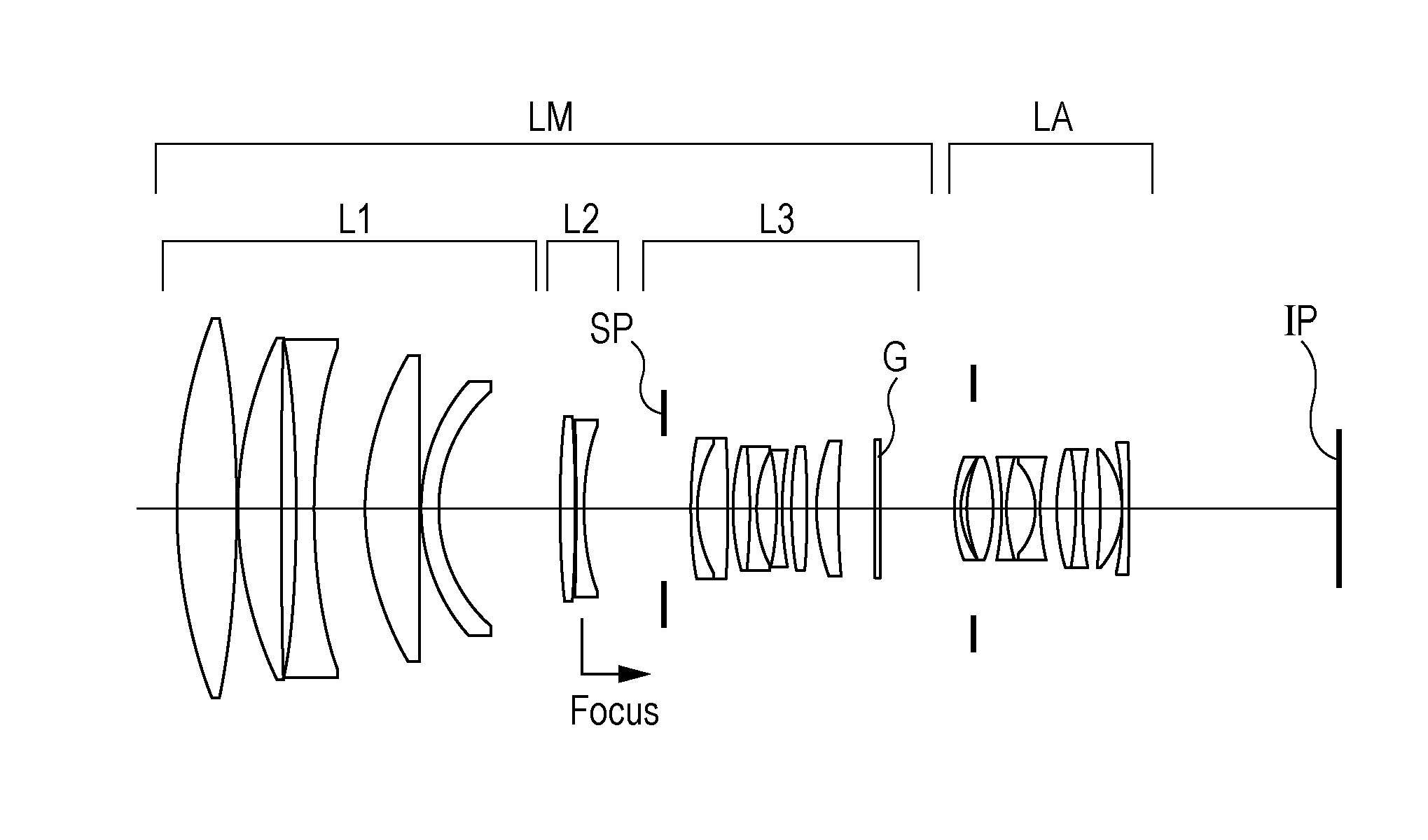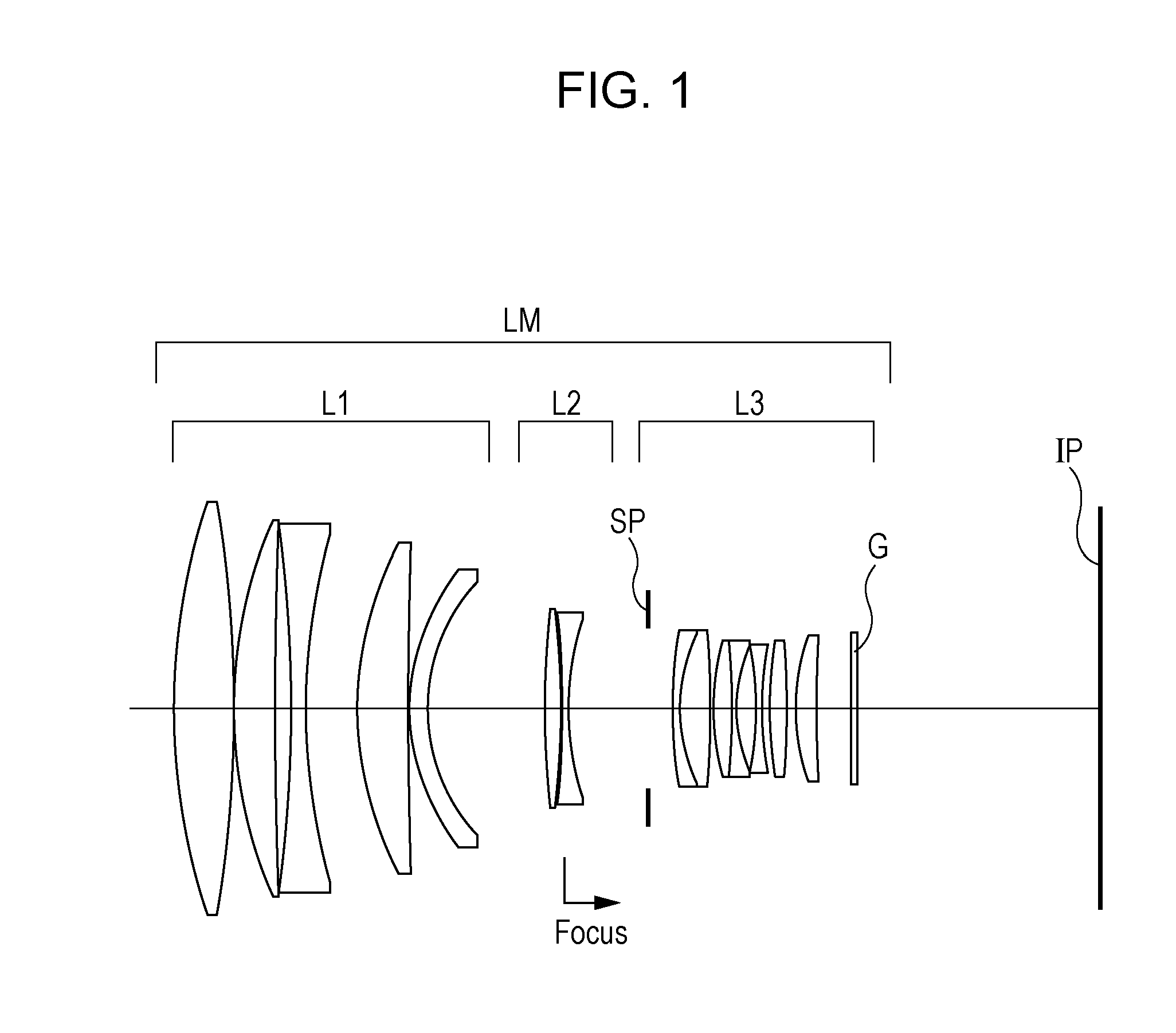Rear attachment lens and image-forming optical system using the same
a technology of image-forming optical system and rear attachment, which is applied in the field of rear attachment lens, can solve problems such as degrading image quality, and achieve the effect of increasing the focal length of the entire system and high optical performan
- Summary
- Abstract
- Description
- Claims
- Application Information
AI Technical Summary
Benefits of technology
Problems solved by technology
Method used
Image
Examples
first embodiment
[0045]In FIG. 3, one of the positive lenses, which is positioned nearest to the image side end, corresponds to the positive lens P1, one of the negative lenses, which is positioned second nearest to the image side end in the entire system, corresponds to the negative lens N1, and one of the positive lenses, which is positioned second nearest to the object side end, corresponds to the positive lens P2.
second embodiment
[0046]In FIG. 6, one of the positive lenses, which is positioned nearest to the image side end, corresponds to the positive lens P1, one of the negative lenses, which is positioned second nearest to the image side end in the entire system, corresponds to the negative lens N1, and one of the positive lenses, which is positioned second nearest to the object side end, corresponds to the positive lens P2.
third embodiment
[0047]In FIG. 8, one of the positive lenses, which is positioned nearest to the object side end, corresponds to the positive lens P1, one of the negative lenses, which is positioned second nearest to the image side end in the entire system, corresponds to the negative lens N1, and one of the positive lenses, which is positioned second nearest to the object side end, corresponds to the positive lens P2.
PUM
 Login to View More
Login to View More Abstract
Description
Claims
Application Information
 Login to View More
Login to View More - R&D
- Intellectual Property
- Life Sciences
- Materials
- Tech Scout
- Unparalleled Data Quality
- Higher Quality Content
- 60% Fewer Hallucinations
Browse by: Latest US Patents, China's latest patents, Technical Efficacy Thesaurus, Application Domain, Technology Topic, Popular Technical Reports.
© 2025 PatSnap. All rights reserved.Legal|Privacy policy|Modern Slavery Act Transparency Statement|Sitemap|About US| Contact US: help@patsnap.com



